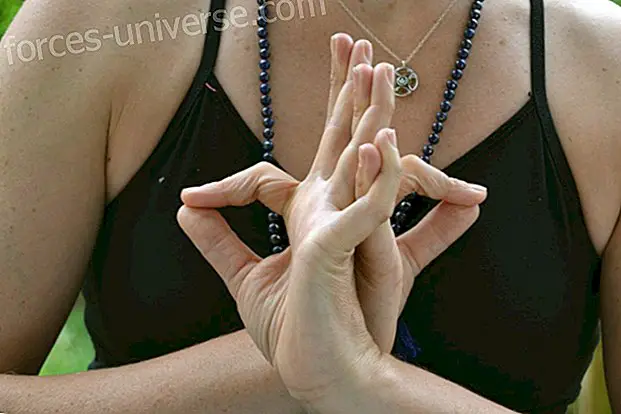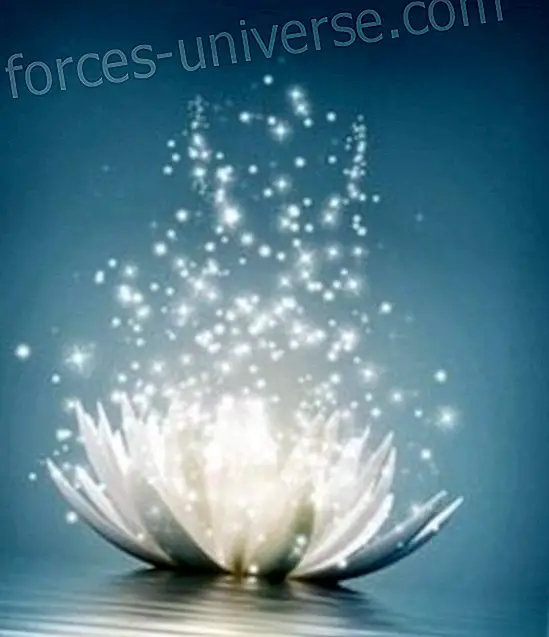Sayadaw U Kundalabhivamsa: Note from this great teacher on the practice of Walking Meditation (Part 3)
- 2018

In the present we will continue with the note of the great teacher Sayadaw U Kundalabhivamsa who has his first part here and his second part here. This time we will talk about Full Mind Meditation while walking . This is a very common practice of moving meditation, used by the ancient teachers as a transition to bring Vipassana Meditation to all the different moments of everyday life . The teacher then enlightens us in the importance of bringing our consciousness in a concentrated way to each and every one of the sensations caused by being in motion. And on this particular occasion, walking .
Observe that during walking meditation, the teacher also explains different ways of labeling depending on the needs of each one. In this way, if your mind is a little scattered at the beginning, which is completely normal, you can add tags to reduce the opportunities for silence in which your mind wanders .
It is of crucial importance for this practice to choose a suitable, quiet place where you can unfold without the need to take away the attention of your body and your mind .
I also want to take this opportunity to make a brief introduction to the life of Master Kundalabhivamsa, which so selflessly leaves us a legacy of great importance about different Vipassan themes.
Sayadaw U Kundalabhivamsa
Master Kundalabhivamsa was born in Bago, Myanmar on a Monday in 1921. From the young age of nine he began as a monk, and at twenty he had already achieved his highest ordination, which tells us of a life of orderly discipline in the search for knowledge and obtaining NIBBANA .
His learning took place in different monasteries, within which you can name the Shwe Hin Tha monasteries located in his hometown, and the Maydhin i monastery.
At the age of thirty-five he obtained his degree in Dhamma Reading, which deepens in 1998 with the title of Agga Maha Kammatthanacariya.
This teacher has taught the Buddhist Disciplines to about two hundred monks per day in the Maydhini Monastery for twenty years, and after being under the tutelage of the Venerable Mahasi Sayadaw for a year, he decides to impart his knowledge in the matter of meditation .
Since then he has conducted meditation retreats and given Dhamma speeches in Thailand, Malaysia, Singapore, United Kingdom, France, United States, Australia and Japan.
In 1978 he founded the Saddhammaransi Meditation Center, which has been growing in Myanmar for many years. And he is one of the Sanghas chief advisors in the main Mahasi center of Yangon.
Throughout his life, this teacher has given us more than forty works on Vipassan themes, of which more than twenty-six have been translated into different languages.
Without further ado, let's move on to the continuation of your note on walking meditation .

Meditation Labels Walking
There are four ways to label MEDITATION WALKING.
Each step is carefully and carefully observed as an object of movement, as two objects, as three objects of movement or as six objects of movement.
The first way to label walking meditation is to make a step label as an object of movement and repeat yourself FOOT RIGHT FORWARD, RIGHT FOOT FORWARD; LEFT FOOT FORWARD, LEFT FOOT FORWARD, keeping your mind focused on the forward movement of the step and not on your foot. In other words, your mind should not be attached to the shape of your foot . It is very important that it is the gradual forward movement of the foot that we should be interested in and not the foot itself.
The second way to label walking meditation is by observing the step as two objects of movement ELEVATING, DOWN; LIFTING, LOWERING . In this case, you should be aware of the gradual lifting of your foot. You must detach yourself from the shape of your foot because this word is here to name only ( pannat ). What you should notice is the awareness of the element of movement that involves gradually rising into the air when you lift your foot. Knowing that it will rise and be aware of that is PARAMAT the real thing that is happening at that moment, that is, the mental and bodily process ELEVATING, DOWN .
The third way to label walking meditation is when you are aware of three objects of movement in your step. LIFTING, PUSHING, LOWERING; LIFTING, PUSHING, LOWERING . When you are raising your foot you should carefully label the gradual upward movement of the foot. Then when you take your foot forward you must be aware of the slow movement of the foot forward and then when your foot descends you must be aware of the movement of your foot slowly going down.
Elements of meditation
In walking meditation, all these three objects of the movement must be observed very consciously and monitored precisely and carefully so that when your foot is being slowly raised centimeter to centimeter, you can notice how it becomes more and lighter as you raise it . When you take your foot forward you should notice and observe the gradual movement forward. Then when you lower your foot and pose it on the floor, you should experience the feeling of heaviness that you have to the extent that your foot descends and falls more and more until it comes into contact with the ground. When you have this awareness in your mind, you will be beginning to have PENETRATED VISION or KNOWLEDGE .
Lightness is provided by TEJO, the fire or heat element, and GO, air or motion or movement element. Heaviness is provided by PATHAVI, earth or hardness element, and APO, water or liquidity element.
The knowledge or awareness of such a mental and physical phenomenon is the beginning of reaching the penetrated knowledge of the intrinsic nature of mental and bodily processes as they really are.
That is the third way to label walking meditation, with ' ELEVATING, PUSHING, LOWERING '.

Six movement objects
The fourth way to label walking meditation is when you observe the step as six objects of movement, ' BEGINNING TO ELEVATE, ELEVATING, BEGINNING TO PUSH, PUSHING, BEGINNING TO LOWER, DOWN '. When you start raising your foot, the heel is raised first. Only after that are the fingers elevated and moved when you lift your leg.
When you start pushing your foot forward you should know that the movement of your foot is to move forward and not backward . Then when you are about to lower your foot, your forward movement is checked a bit before starting to lower your foot, then he moves down slowly and finally touches the ground or the ground and rests. Another way to observe your step as six objects of the movement in walking meditation is ' INTENTION TO ELEVATE, ELEVATE, INTENTION TO PUSH, PUSH, INTENTION TO LOWER, DOWN '.
Here again you must notice and be aware of both the mental and physical phenomena .
There is also another way to notice the passage as six objects of the movement : ' LIFTING, UPLOADING, PUSHING, DOWN, CONTACT, PRESSURE '.
When you are lifting, you should be aware of the heel lift itself and repeat yourself ' ELEVATING, ELEVATING '. Then your fingers will rise out of contact with the floor, and you will notice ' RISING, RISING '. Next you must push your foot forward and label ' PUSHING, PUSHING OR'. After bringing your foot forward, you should start lowering it, and it is important that you watch your foot carefully going down slowly and label ' DOWN, DOWN '. Then, while it is moving down you should know and feel the contact of the foot with the ground and repeat yourself ' CONTACT, CONTACT '. Finally, in order to raise the other foot, you must press this. In doing so, you must label ' PRESSURE, PRESSURE '.
This is the last way to label the step as six objects of movement in walking meditation.
In this way we conclude this part of the note, so we are pending the continuation and the taking of meditation to all aspects of everyday life, which you can find here.
I leave a big hug.
AUTHOR: Lucas, editor of the great family of HermandadBlanca.org
SOURCE:
- http://www.myanmarnet.net/nibbana/sadhama1.htm
- http://www.vipassanadhura.com/howto.htm#y
- http://www.dhammaweb.net/kundala.html
- http://www.myanmarnet.net/nibbana/biograp1.htm#saddhamaransi
- http://mahasi.eu/teachers/kundala.html?_sourcePage=%2Fteachers.html
PART 1: sayadaw-u-kundalabhivamsa-grand-teacher-about-meditation-mindfulness-part-1 /
PART 2: sayadaw-u-kundalabhivamsa-grand-master-about-meditation-mindfulness-part-2 /
PART 3: sayadaw-u-kundalabhivamsa-grand-master-about-meditation-mindfulness-part-3 /
PART 4: sayadaw-u-kundalabhivamsa-grand-master-about-meditation-mindfulness-part-4 /






